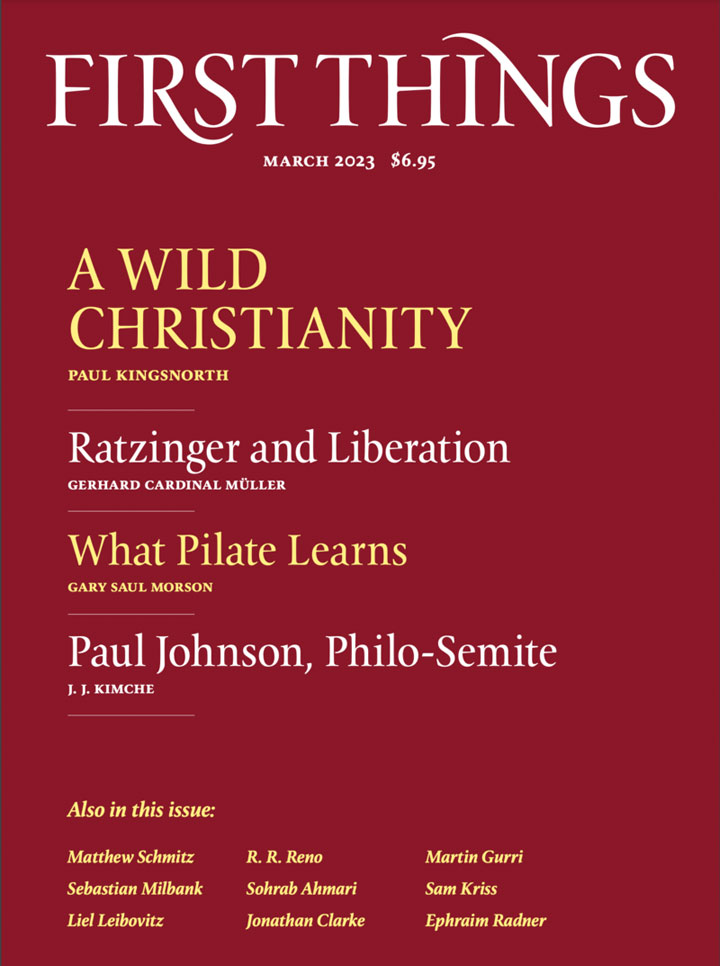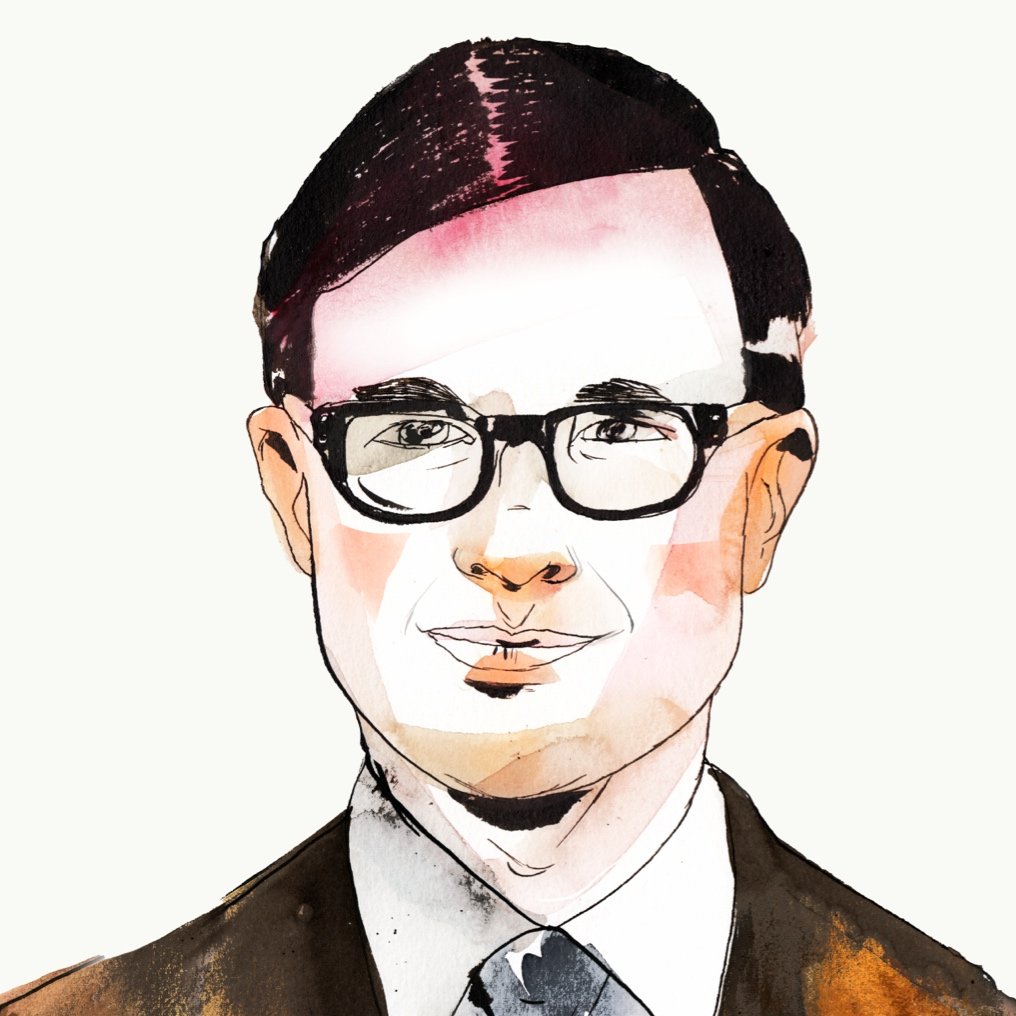Benedict XVI believed that his work was done. Three days after announcing his resignation, he gave a speech on the struggle that had defined his pontificate. It concerned the interpretation of the Second Vatican Council, in which he had taken an important part. On one side stood the “true council,” which had sought to address contemporary challenges without watering down the faith. On the other stood the “virtual council,” a false image, wherein the council seemed to provide a mandate for perpetual liberalization. At first, the virtual council had carried the day, leading to empty seminaries, closed convents, and banal liturgies. Yet after fifty years, the truth had prevailed. As Benedict told the crowd that day, “This virtual council is broken, is lost.”
But he was wrong. Far from being dead, the “virtual council” was about to find champions at the highest levels of the Church. This unexpected outcome would raise doubts about Benedict’s vision of reform, leading some to conclude that Catholicism must be maintained on unsparingly traditional lines, or not at all. The failures of the center would give rise to alternatives that were far more radical—at least rhetorically.
At the time, many would have agreed with Benedict. From 1978 to 2013, the linked pontificates of John Paul II and Benedict XVI had set the Church on a more conservative course, correcting dissenting theologians, appointing less liberal bishops, and inspiring a generation of relatively orthodox priests. As a young theologian, Joseph Ratzinger had been regarded by some (and not without justification) as having progressive tendencies. But from the first, Benedict had insisted that the council be seen as standing in line with, rather than departing from, the Church’s earlier course. This position set him at odds not only with liberals, who celebrated the council’s seeming novelties, but with traditionalists who regarded them with dread.
Benedict fought liberal understandings of the Church on two main battlefronts: the liturgy and moral theology. In the wake of the Second Vatican Council, Evelyn Waugh observed that the Church had undergone “a superficial revolution in what [had] seemed permanent.” Benedict insisted that amidst these changes was a deeper consistency. He regarded Church history as exhibiting reform “in continuity” rather than “discontinuity and rupture.”
That is why Benedict took the surprising step of authorizing broader use of the Latin Mass. In his edict removing restrictions on its use, he declared the great truth that defined his pontificate: “What earlier generations held as sacred, remains sacred and great for us too, and it cannot be all of a sudden entirely forbidden or even considered harmful.” In immediate terms, Benedict sought to promote peace between the broader Church and those attached to the Latin Mass. But at a deeper level, he hoped to overcome the Church’s alienation from its own history. As Benedict told an interviewer, “It was about reconciliation with one’s past.”
Benedict’s liturgical legacy was tied to his defense of Catholic moral teaching. Before he became Benedict XVI, Joseph Ratzinger had served as the head of the Holy Office under John Paul II. In that role, he engaged in a great debate with Walter Kasper, another German cardinal. Kasper had proposed that priests should be permitted to give Communion to the divorced and remarried, an act implying that marriage can be dissolved. Kasper justified his idea by pointing to the stunning changes that had occurred in Catholic life since the Second Vatican Council. “Our people are well aware of the flexibility of laws and regulations; they have experienced a great deal of it over the past decades. They lived through changes that no one anticipated or even thought possible.” If Catholics no longer had to hear Mass in Latin, or abstain from meat on Friday, why should they be bound by old understandings of marriage?
Ratzinger argued against this proposal. At stake, he believed, was the very nature of Catholic teaching. If the Church could change its teaching on this point, it could do so on any other. Standing behind Kasper’s argument, however, was an important truth: A disruption in rites is a disruption in mores. Change what people do, and you change what they believe. That is why Benedict sought to vindicate the Church’s liturgical patrimony as well as its moral teaching. He labored to ensure that the discontinuities in Catholic life were only superficial or temporary, even as others sought to make them essential and lasting.
Ratzinger not only got the better of the argument; he became supreme pontiff. Ratzinger’s ascendancy allowed many to believe that Kasper’s vision of Catholicism had been swept from the stage, not only by superior theological reasoning but by the “biological solution,” whereby older and more liberal priests were replaced by younger and more orthodox (if less numerous) ones.
And yet, after Benedict’s resignation, a pope was elected with the backing of Kasper and likeminded cardinals. Francis promoted Kasper’s proposal and eventually issued Amoris Laetitia, an ambiguous document that seemed to allow Communion for the divorced and remarried without specifically authorizing it. In time, Benedict’s broad permissions for the Latin Mass were rescinded, an act that “broke the heart” of the retired pope, according to his secretary.
These developments overturned old certainties. Some Catholic leaders who had appeared to be rock-ribbed supporters of the legacy of John Paul and Benedict turned out to be surprisingly progressive. Christoph Cardinal Schönborn, a high-born Austrian prelate who had studied under Benedict and served as secretary of the commission responsible for drafting the Catechism of the Catholic Church, endorsed the idea of blessing same-sex unions. Meanwhile, seemingly mainstream prelates turned in a traditional direction. Archbishop Carlo Maria Viganò, once a high-ranking curial official, became an unstinting critic of Vatican corruption and doctrinal deviations—and, almost inevitably, a fan of the Latin Mass.
Renewed interest in the Latin Mass can be seen as a deepening of Benedict’s legacy. Yet on other points, rising interest in pre-conciliar life led some Catholics to reject what he stood for. John Paul II had famously declared that “The Church proposes; she imposes nothing,” and Benedict shared the basic sentiment. Like his predecessor, he saw problems in the way the pre-conciliar Church had suppressed new theological currents, and he sought to articulate a form of Catholic faith at home in religiously heterogeneous societies.
Catholic integralism, a tradition of thought that insists that politics should take man’s final end into account, has gained a striking currency among younger Catholics during the Francis pontificate, posing a challenge to Benedict’s legacy. It appeals to a sense that conservative Catholicism has been too tied to an anti-totalitarian rhetoric that made sense in the twentieth century but is unsuited to an age that, far from worshiping power, seems to deny the legitimacy of any authority.
The rise of integralism, no less than the return of Catholic progressivism, is a result of what Ross Douthat called the “crisis of conservative Catholicism.” The crisis stemmed not just from the desire some felt for a more traditional, or a more progressive, faith. It also reflected a decline in Catholic self-confidence in the wake of widespread allegations of priestly sexual abuse and the failure of the “new evangelization” to reverse declines in Catholic practice across the developed world.
If progressives thought the conservative Church of John Paul and Benedict had been too oppressive, some tradition-minded Catholics concluded the opposite. They observed that even conservative bishops had collaborated in liberal results, in part because they adhered to a collegial model that involved promoting their opponents. Walter Kasper, who received his red hat from John Paul II with the consent of Joseph Ratzinger, was a living illustration of how accommodating the supposed hardliners had been.
In some ways, the crisis that engulfed Benedict’s legacy mirrored the crisis of Western political institutions, with perceived failures of the center emboldening uncompromising challengers. One example is the phenomenon of pasokification, the decline of center-left parties across the West. The term derives from Pasok, the name of a once-dominant party in Greek politics, which lost its base by implementing austerity measures during the Eurozone crisis. Pasok was swept away by the left-populist Syriza, which swore to resist the dictates of German bankers.
In time, Syriza, too, chose to impose austerity—a stark demonstration of the difficulties faced by those who promise a radical break from the status quo, only to encounter the burdens of governing. In a process that would become familiar as populist leaders flailed across the West, a stylistic radicalism proved unequal to the task of effecting real change in policy.
Something similar happened in the Catholic ecclesial sphere. Upon his election, Pope Francis was hailed as a “great reformer,” and liberal Catholics hoped he would finally discard some of the Church’s inconvenient teachings. On divorce and remarriage, the death penalty, and other matters, Francis has cheered liberals while dismaying conservatives. Yet whenever the possibility of a decisive break has appeared, he has pulled back. Even in Amoris Laetitia, his most controversial document, Francis exercised a kind of restraint. He offered, essentially, a grand fudge that obscured Catholic belief on divorce and remarriage without creating a precedent for the explicit reversal of other teachings.
Provocative rhetorical gestures have typified challenges to the ecclesial status quo—from dissenting theologians challenging church doctrine in the 1970s, to traditionalists indicting the hierarchy in the 2020s. Rhetorical extremism comes naturally to those who are alienated from authority. With few responsibilities, they can speak as sharply as they want. But rebarbative rhetoric is an unpromising basis on which to rebuild the Church’s present authority. If liberal Catholics advocate limits on the exercise of church authority in principle, traditionalist Catholics can sometimes be church authority’s most effective opponents in practice. One sees this when they defend the Church’s prerogatives in historical controversies while speaking of the contemporary Church as corrupt and undeserving. While expounding the most extreme theories of church authority, they can promote mistrust of the Church’s current leaders, by suggesting that they are too timid, too unbelieving to go as far as the faith requires.
In their common mistrust of authority, one observes a convergence between two Catholic camps—one self-consciously liberal, the other self-consciously illiberal—that are ostensibly opposed. Rhetorical radicalism, no less than bland moderation, can be its own way of doing nothing. This is one reason why a Catholicism that learns from the failures of recent decades will be less interested in advancing startling theses than in shoring up the Church’s authority in ways that are quieter, but more practical.
In time, perhaps, those who see the limits of Benedict’s approach will come to a fuller appreciation of what he did achieve. Confucius told his disciple, “The practice of humanity comes down to this: Tame the self and restore the rites.” Whatever his faults, Benedict accomplished these things. He advanced the restoration of neglected rites, and when his work was reversed, he practiced self-restraint by suffering silently. He provided an image of Christ’s forbearance, as well as his authority.
Even so, Benedict’s thin, lonely figure, stalking the Vatican gardens, draped in white, seemed to haunt those who opposed the truths he proclaimed. They wanted him to go away, along with the Church’s settled dogmas and ancient liturgy. There was always going to be something strange in the idea of a retired pope, diminished but undeparted, shadowing his successor. But it is hard not to see in Benedict’s ongoing presence a symbol of Catholic belief. We do not stand alone, but amid a cloud of witnesses whose words we dare not contradict. Because he proclaimed an undying truth, Benedict lives.


